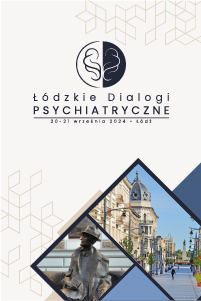The application of bifrontal electrotherapy in patients with a diagnosis of schizophrenia – case series description
Karina Nowakowska1, Jakub Kaźmierski2
 Affiliacja i adres do korespondencji
Affiliacja i adres do korespondencjiElectrotherapy is considered a very effective and safe therapeutic method. Its most frequently described adverse effect is the impairment of cognitive functions. Currently, the most commonly applied form of electrotherapy are bitemporal procedures and the most frequent and best-studied indication for its application are depressive disorders. A method combining high effectiveness with satisfactory safety is the bifrontal application of the electrodes, although study results are often inconsistent. An issue which should also be noted is the lack of studies comparing the effectiveness of bifrontal and bitemporal procedures in the reduction of positive and negative symptoms of schizophrenia and assessing the safety of these methods in terms of the influence on cognitive functions. The present paper presents a clinical description of four patients with schizophrenia who have undergone electrotherapy procedures performed applying the bifrontal method. The decisive indication for applying the bifrontal procedures were the memory disturbances the persistence of which was reported by the patients during the application of bitemporal procedures. The analysed clinical cases indicate the effectiveness of the bifrontal electrotherapy procedures which was comparable with the effectiveness of bitemporal procedures with the simultaneous better toleration of the former. Improvement was observed in terms of paranoid, catatonic and negative schizophrenia symptoms. At the same time the patients reported subjectively better tolerance of the procedures, as well as improvement in the recalling of facts and events.





















